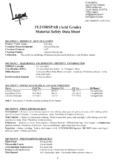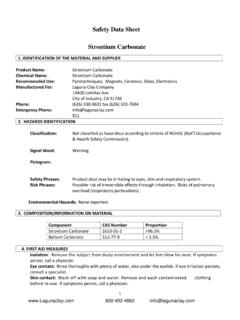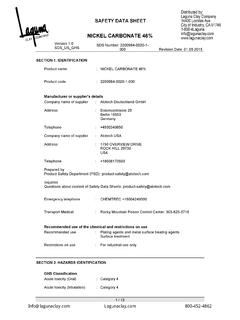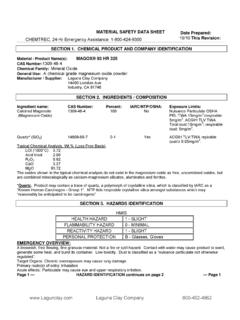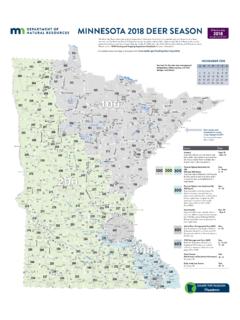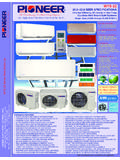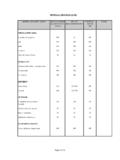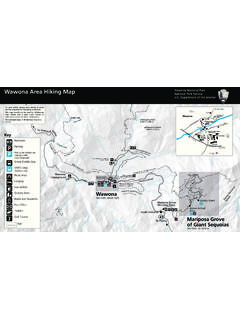Transcription of Talc C-98 Safety Data Sheet - Laguna Clay Co.
1 Natural Minerals - TalcDate SDS Prepared: June 30, 2017 Page 1 of IDENTIFICATIONC ommon Name:REACH Registration Number:Trade Names:C Series: D series:G seriesH series:L series:M series:T series:Crude Ore:Manufacturer Name:Natural MineralsAddress:PO Box 1048 Van Horn, TX 79855 Phone:432-283-2330 Fax:432-283-2569 Assistance:432-207-0885 (24-hour number)Recommended IDENTIFICATIONC lassification of the substance or mixture:Quartz (0 - )GHS-US classificationAcute Tox. 4 H332 STOT SE 3 H335 STOT RE 1 H372 Classification (67/548/EEC): Not classified This product should be handled with care to avoid generating ElementsLabel element in accordance with Regulation (EC) No1272/2008 Emergency Overview: Danger!
2 Lung injury and Cancer HazardHazard statements: H350 - May cause CANCER (inhalation) H371 May cause damage to respiratory system through prolonged or repeated exposure P260 Do not breathe dust P284 Wear respiratory protectionOther Hazards:This product is an inorganic substance and does not meet the criteria for PBT or vPvB in accordance with Annex XIII of , C-92, C-98, C-300, CB-2773, CB-4060400-D, 600-DGP-LSAFETY DATA SHEETTalcProduct(s):All Raw, Milled and Blended Talc SeriesExempted in accordance with Annex , 400-MB, 500-MB, 600-MBTDM-W325 PIO3 Human health: Carcinogen Environment: not classifiedTalc and DolomiteThis document has been prepared in accordance with the Occupational Safety and Health Administration (OSHA) Hazard Communication standard, 29 Code of Federal Regulations (CFR) (g), Safety Data product is used as a functional mineral in the production process of the ceramics, plastics, paint, coatings, rubber, asphalt and other , 400-HB, 500-HB, 600-HB200-LB, 400-LB, 500-LB, 600-LB, 9400-LB Physical and chemical hazards: not classifiedClassification (EC 1272/2008):Natural Minerals - TalcDate SDS Prepared.
3 June 30, 2017 Page 2 of ON INGREDIENTSC omposition/Information on IngredientsMineral NameClassification (GHS-US)Talc (Magnesium Silicate)CAS: 14807-96-6No classificationEINECS: 238-877-9 DolomiteCAS: 16389-88-1No classification (Magnesium Calcium Carbonate)EINECS: 240-440-2 QuartzCAS: 14808-60-7 EINECS: 238-878-4 Impurities:This product is considered single AID MEASURESEyes:Skin:Ingestion:NoInhalation :Ingestion:No treatment important symptoms and effects, both acute and delayedInhalation:WARNING:Skin Contact:Ingestion:Indication of any immediate medical attention and special treatment neededNo specific actions are MEASURES AND INFORMATIONFire Extinguishing Media: Special Hazards:Hazardous combustion products: none under normal conditionsAdvice for firefighters:Special firefighting procedures: no specific procedures given0-30 This product does not contain detectable amounts of asbestos fibers as defined by the US Occupational Safety and Health Administration (OSHA) and the European Directive 83/477/EEC when analyzed by conventional methods.
4 This statement is based on verification by certified independent laboratories using Polarized Light Microscopy (PLM).This product is not flammable. Use fire extinguishing media appropriate for surrounding A1, H350 STOT SE 3, H335 Eye Contact: As with most dust or particulate materials, talc can cause temporary discomfort and irritation if accidentally introduced into the eye. Flush the affected eye(s) with clean water or saline rinse while holding the eyelids open; if irritation or redness develops, seek medical irritation of nose or throat develops, move away from the source of exposure and to fresh air; if irritation persists or breathing difficulties develop seek immediate medical Contact: Wash with soap and water and apply a moisturizing lotion.
5 Broken skin can be cleansed with mild soap and water; if irritation or redness develops and persists, seek medical Wt/Wt50-100 CAS# / EINECS#Symptoms of acute accidental exposure are non-specific and similar to the inhalation of any dust that is not toxic. Such symptoms may include coughing, wheezing, difficulty breathing and upper respiratory tract irritation. Long-term excessive exposures may lead to severe and permanent damage to the product contains crystalline silica. Long-term overexposure to crystalline silica may lead to the development of silicosis and/or cardiopulmonary direct exposure can cause drying of skin, but no adverse effects are known as a consequence of an application to unbroken material is considered to be harmless and inert when Minerals - TalcDate SDS Prepared: June 30, 2017 Page 3 of RELEASE MEASURESP ersonal precautions, protective equipment, and emergency proceduresAvoid creating excessive dust.
6 Follow precautions for safe handlingdescribed in this Safety data precautionsNo special and material for containment and cleaning upReference to other sectionsFor personal protection see section 8. For waste disposal see section AND STORAGEP recautions for safe handlingConditions for safe storage, including any incompatibilitiesSpecific end use(s)If you require advice on specific uses, please contact your CONTROLS / PERSONAL PROTECTIONC ontrol Parameters:Exposure Controls: Appropriate engineering controls: Individual protection measures, such as personal protective equipment:Eye protection: Skin protection: No specificHand protectionProtective gloves are not necessary, but recommended for those prone to skin irritation or protection.
7 Environmental exposure controlsUse all available work practices to control dust exposure. Practice good housekeeping. Do not allow excessve amounts dust to collect on surfaces, which could become airborne and cause potential exposure airborne dust generation. Use process enclosures, local exhaust ventilation or other engineering controls to keep airborne levels below permissible exposure limits. If user operations generate dust, use ventilation to keep exposure to airborne particles below the exposure limit. Apply organizational/administrative measures, by isolating personnel from dusty areas. Remove and wash soiled Safety glasses with side-shields in circumstances where there is a risk of dust generation that could lead to mechanical irritation of the specific requirement.
8 For hands, see of a properly fitted NIOSH/MSHA approved particulate respirator is recommended when prolonged exposure to airborne dust concentrations, wear respiratory protective equipment that complies with the requirements of national : Personal protection information in this Section 8 is based on general information for normal uses and conditions. Where special or unusual uses or conditions exist, it is suggested that the assistance of an industrial hygienist or other qualified environmental professional be adequate ventilation. If the product is clean and dry, shovel, vacuum or sweep up and return to container for use or disposal. Use caution on a wet floor, as it may be , like all fine powders, can create dust when handled.
9 Keep all floors, workstations, stairs and handrails clean and dry. Avoid airborne dust generation. Provide appropriate exhaust ventilation at places where airborne dust is generated. In the case of insufficient ventilation, wear suitable respiratory protective all available work practices to control dust exposure. Keep airborne dust concentrations below permissible exposure limits. Practice good housekeeping. Do not allow dust to workplace regulatory exposure limits for all types of airborne dust. For the national regulations about the Occupational Exposure Limit (OEL) of talc powder see section Minerals - TalcDate SDS Prepared: June 30, 2017 Page 4 of AND CHEMICAL PROPERTIESA ppearance:Powder or rockColor:POWDERS: Dark Gray (almost black) to whiteROCKS: All colors including black to whiteOdor:EarthyOdor threshold:Not RelevantpH~9 Melting Point/Freezing point:>1300 oCFlammability (solid, gas):NonflammableNot explosive.
10 Limits do - g/cm3 Solubility:NegligibleYesAuto-ignition temperature:Not applicableDecomposition temperature:>950 oCExplosive properties:Not explosiveOxidizing properities:Not oxidizingOther information:No other AND REACTIVITYR eactivityInert, not reactiveChemical stability:Chemically stablePossibility of hazardous reactions:No hazardous reactionsConditiuons to avoid:NoneIncompatible materials:None knownHazardous Decomposition Products: INFORMATIONP otential Health EffectsInformation on toxicological effects Information and the likely routes of exposure:Ingestion:Eye ContactSkin ContactInhalationTalc (14807-96-6) ACGIH:QuartzNo adverse effects expected, however, large amounts may cause nausea and vomiting.


